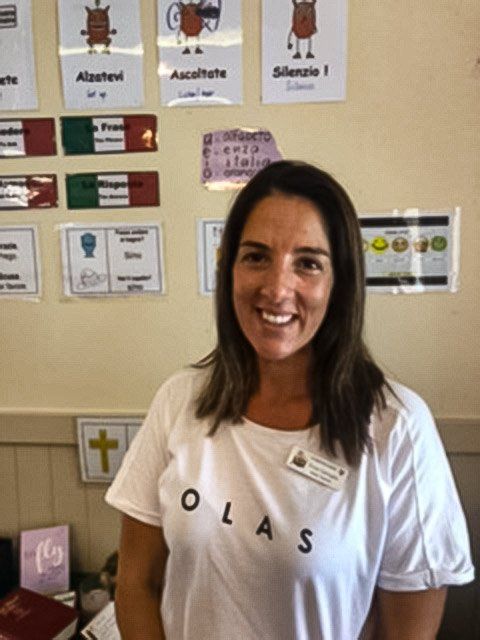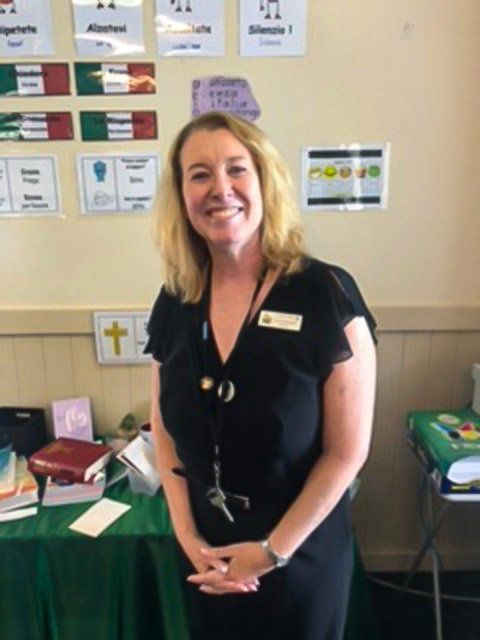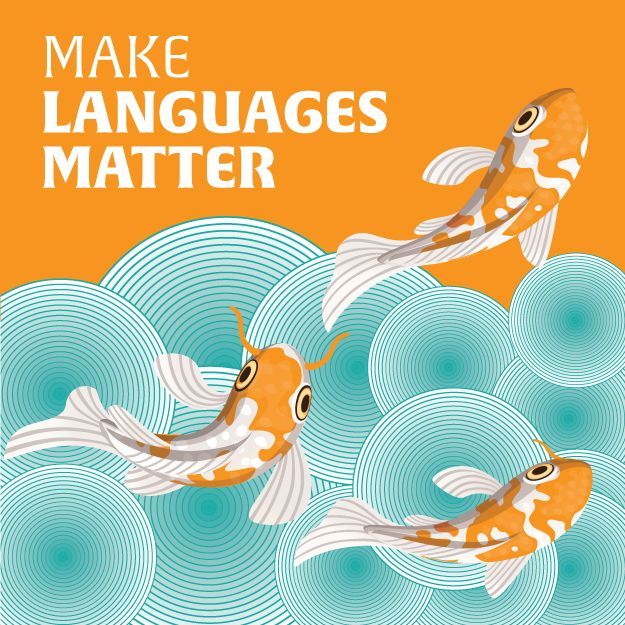Case Study 1
CLIL in the primary school: a collaboration between a Languages teacher and a classroom teacher
This is Enza.
She has been teaching Italian in Queensland for 13 years.

Her school, St Martin’s, is a Catholic primary school and whilst the school admin team is supportive of their staff and of Languages in general, Enza still faces a challenge most other primary Languages teachers share: she only sees the kids for 40 minutes a week. And once you factor in transitions into and out of class, that leaves just half an hour of teaching time, if you’re lucky!
Enza has a warm and outgoing style of teaching, and the kids respond in kind – they want to talk to her, engage with her and are interested in Italian because she makes them feel good about it.
This is Sandra. She has been teaching for 35 years and is currently a Year 6 classroom teacher at St Martin’s.

Across her career she has taught a variety of year levels, has held leadership positions, and also did a stint as a secondary school teacher. Sandra has high expectations for her students, and she holds them to account. This pays dividends for their learning and their preparedness for high school. Sandra has an unbeatable sense of humour, and she develops fiercely loving relationships with her students. She does not, however, have any past experience speaking or learning Italian.
Enza and Sandra have worked together over the last three years to develop and refine a Content and Language Integrated Learning (CLIL) program that integrates Year 6 Humanities and Social Science (HASS) and Italian, with a focus on food and Italian migration to Australia. Enza was the Italian Language expert, and Sandra provided the Year 6 HASS curriculum expertise.
Enza was looking for a way to enhance her students’ Italian proficiency, and in particular their willingness and confidence to speak in the target language (TL). This is a challenge for Languages teachers everywhere, but it’s particularly tough when you only see the kids for such a short time each week. And some weeks that one lesson may be lost due to the general interruptions and events of the school year.
Sandra, on the other hand, was looking for a new challenge.
Sandra and Enza attended Languages Roadshow: Brisbane as a team in 2019 and 2020. They listened to Kelly’s presentation on CLIL in 2019 and were keen to give it a go. Maybe it was the bubbly talking at that first conference, but then after hearing more about CLIL in 2020 they were certain – it was going to happen.
The conferences gave them the initial ideas and motivation to get the planning started. They then completed the Languages Roadshow online course ‘Integrate to Maximise with CLIL’ to further their pedagogical understanding.
Together, they created a term-long unit. The process was very iterative. As is usually the case when writing CLIL units, they planned way too much content and had to keep cutting it back and tightening things up to ensure that they’d actually reach the end of the unit in the time available, and that the most critical content and language was prioritised.
The key HASS concepts covered included who migrated to Australia and why – including push / pull factors – and what contribution these migrant groups have made to Australian society.
From the Italian Curriculum, they focussed on Italian cuisine and the impact of Italian migration on Australian food culture. The specific language they chose to focus on were likes and dislikes, adjectives and giving reasons. There were also ample opportunities to review previously covered language like colours, countries and food words, as well as classroom instruction language.
Enza committed to a renewed focus on using predominantly TL in Italian class. She implemented a range of fun strategies to keep her and the students accountable, as she describes in the video.
Last year, Enza was on the hunt for another Italian teacher to help extend the program. She connected with another Brisbane teacher and created a Penpal project. The project allowed students to introduce themselves online via the Teams platform.
As part of the CLIL program, students discussed the cultural diversity of this Penpals program, which in turn led to students recognising the diversity of their local community. At the end of the year, the students met one another in person in a meet and greet morning. This encounter, embedded within the CLIL program, made for a memorable, real life language learning experience.
Unless you count the words gelato, fettuccine and Prosecco, Sandra doesn’t speak Italian. So how does a CLIL program work when one half of the teaching team doesn’t speak the language?
It’s important to note that Sandra came into this project with an excellent mindset. She threw herself into the task with a beginner’s curiosity and a true enthusiasm for making mistakes - which her Year 6s regularly pointed out to her! Enza also made time to informally tutor Sandra to get her started with a few basics.
The teachers also did the following:
- Enza and Sandra structured the lessons so key language for the upcoming HASS lesson would be taught or reviewed in the Italian lesson earlier in the week.
- Enza recorded herself reading the learning intentions and success criteria for the HASS lessons in Italian and would embed the video in the HASS powerpoint. She would also sometimes record herself saying any key words or sentences for the lesson.
- Sandra learnt some key greetings and instructions at the start of the term and added to her vocabulary as the term progressed.
- Most lessons used the alternating input / output method of translanguaging. In other words, students would often read or listen to something in English (like a video sharing experiences of migrants) and would then do something with that in Italian – such as answer a multiple-choice quiz that used mostly familiar language.
Fast-forward to 2022, and Sandra and Enza are about to embark on their third year of running and refining the program. Both teachers feel that the implementation of CLIL has been professionally reinvigorating for them, and has had significant benefits for the kids.
For the students, target language use increased dramatically, which allowed them to handle more input and output in Italian. Students’ behaviour and engagement across both subject areas were much higher as they had to really focus on the content that was being presented to ensure understanding across the two areas. The more capable students were able to extend themselves for assessment thanks to the variety offered by the program and the multiple opportunities for students to express their understanding.
For the teachers, the benefit of the CLIL program was being part of an innovative program with a focus on a specific outcome.
At Languages Roadshow, we love sharing this story because it shows that you don’t have to have every duck in a row in order to make things happen. If Enza had waited until she encountered an Italian speaking classroom teacher, she’d probably still be waiting!
This story also shows the power of working with the right people. Sandra and Enza are a great team – they have different backgrounds but similar educational philosophies and enjoy having a laugh together. They were willing to take a (educated) chance on something new. And it’s paid off.
The video below will give you more insight into this project.
If you’d like to learn more about CLIL, you might like to check out our online course or come along to one of our face-to-face events.


